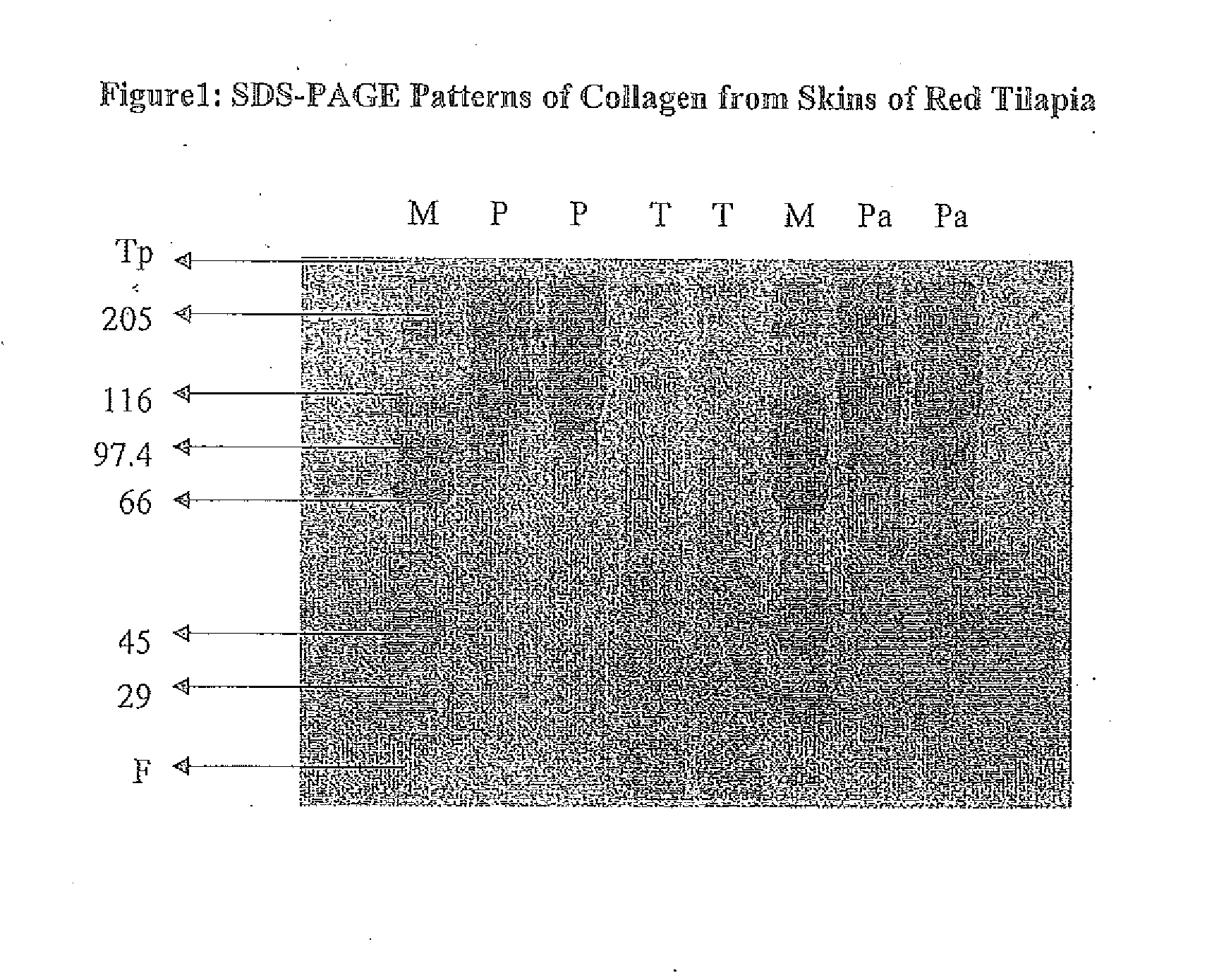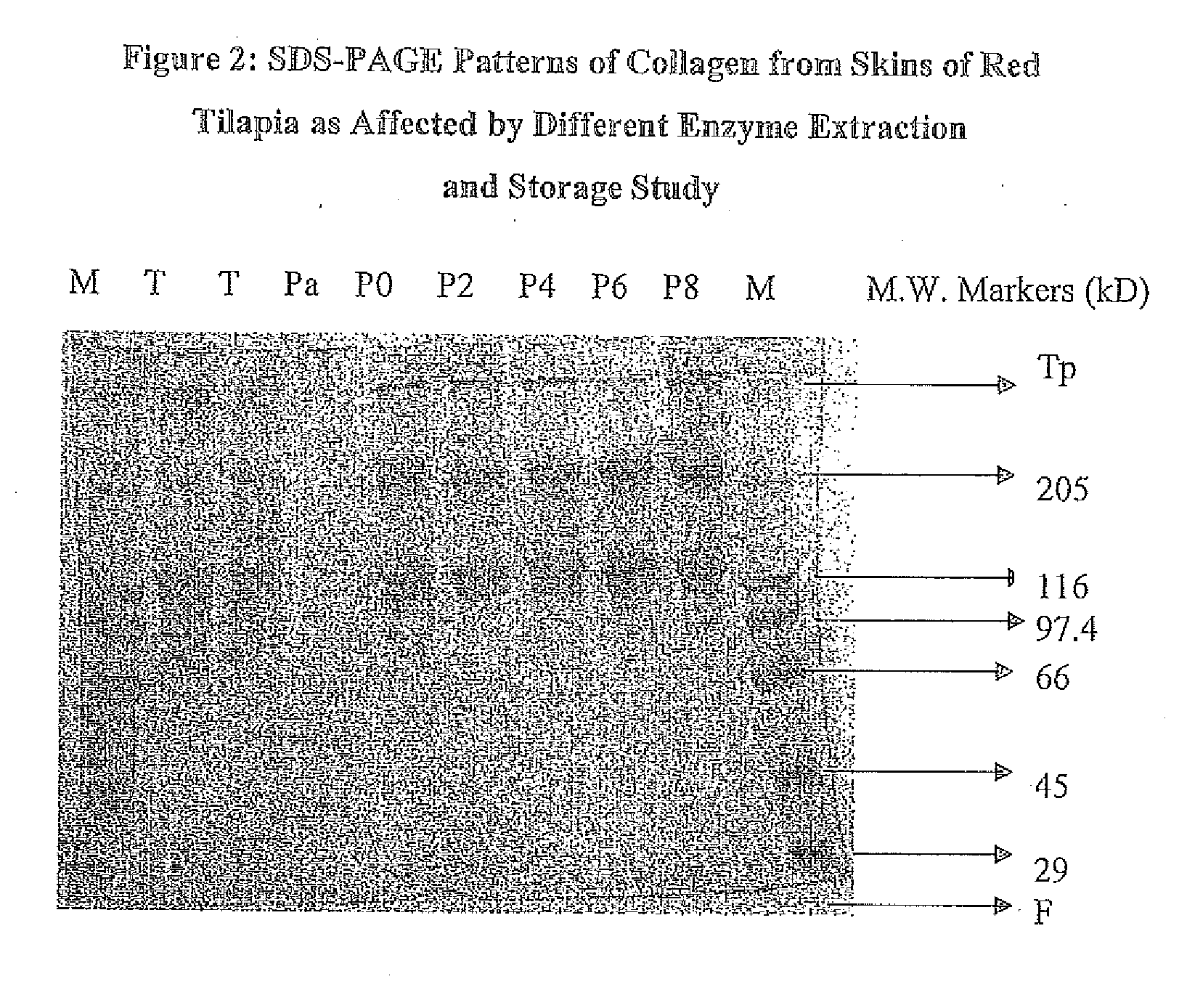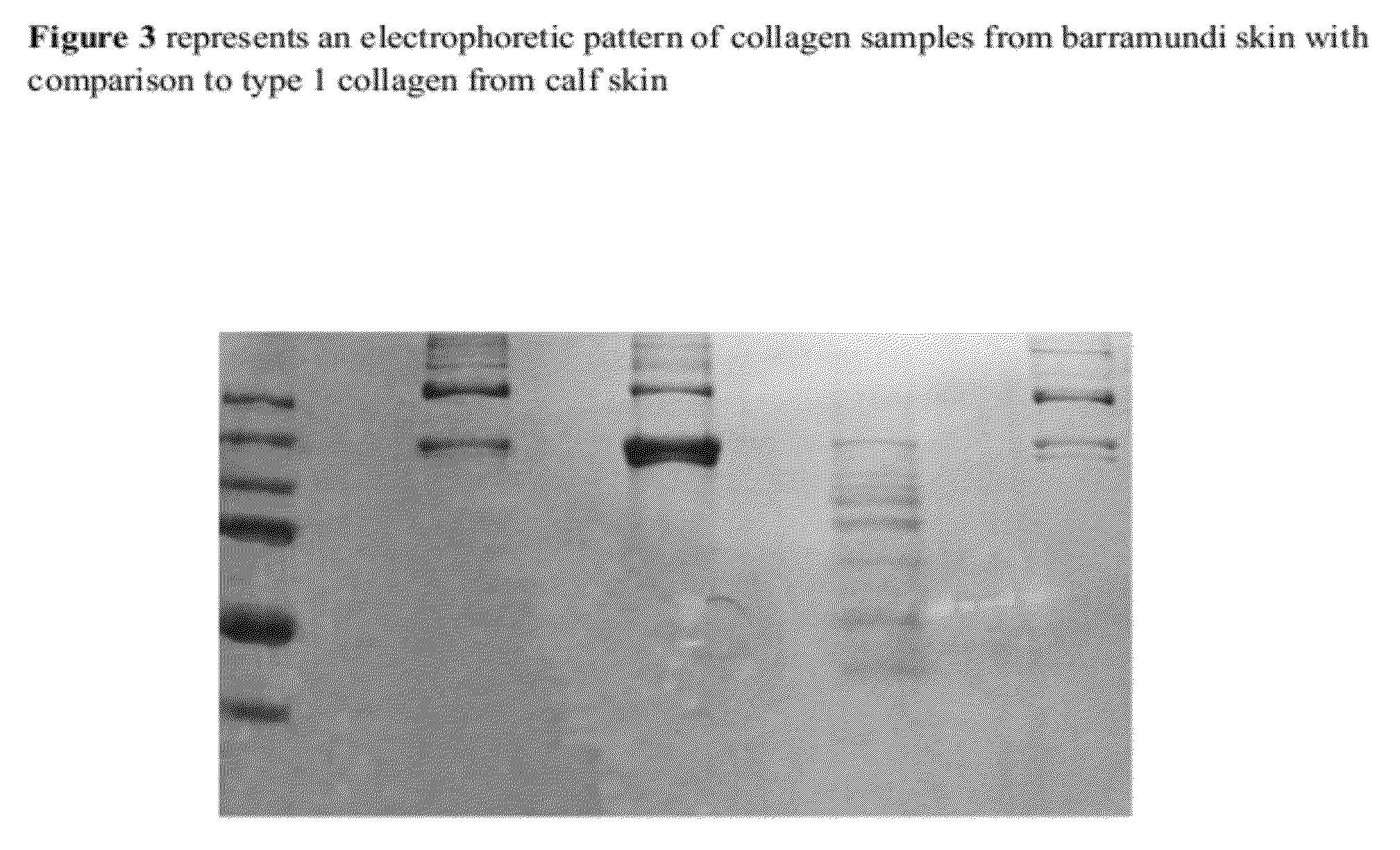Collagen extraction from aquatic animals
- Summary
- Abstract
- Description
- Claims
- Application Information
AI Technical Summary
Benefits of technology
Problems solved by technology
Method used
Image
Examples
examples
Materials
[0020]Red tilapia (Oreochromis nilotica) is a cultured freshwater fish obtained from a local fish farm in Ulu Langat, Selangor. The red tilapia weighed between 500 g to 600 g. Upon arrival at the laboratory, the fish were killed, filleted and the skin was manually removed. The skins were stored at −20° C. until to be used.
Chemicals
[0021]Pepsin (crystallized and lyophilized, EC 3.4.23.1, from porcine stomach mucosa) with a declared activity of 3460 units / mg protein was obtained from Sigma Chemical. Trypsin (crystallized and lyophilized, EC 3.4.21.4 from porcine pancreas) with a declared activity of 40 U / mg protein and Papain (dry powder, EC 3.4.22.2, from Carica papaya) with a declared activity of 30000 USP-U / mg were obtained from Merck (USA). All other chemicals used were of analytical grade.
PUM
| Property | Measurement | Unit |
|---|---|---|
| Temperature | aaaaa | aaaaa |
| Temperature | aaaaa | aaaaa |
| Temperature | aaaaa | aaaaa |
Abstract
Description
Claims
Application Information
 Login to View More
Login to View More - R&D
- Intellectual Property
- Life Sciences
- Materials
- Tech Scout
- Unparalleled Data Quality
- Higher Quality Content
- 60% Fewer Hallucinations
Browse by: Latest US Patents, China's latest patents, Technical Efficacy Thesaurus, Application Domain, Technology Topic, Popular Technical Reports.
© 2025 PatSnap. All rights reserved.Legal|Privacy policy|Modern Slavery Act Transparency Statement|Sitemap|About US| Contact US: help@patsnap.com



